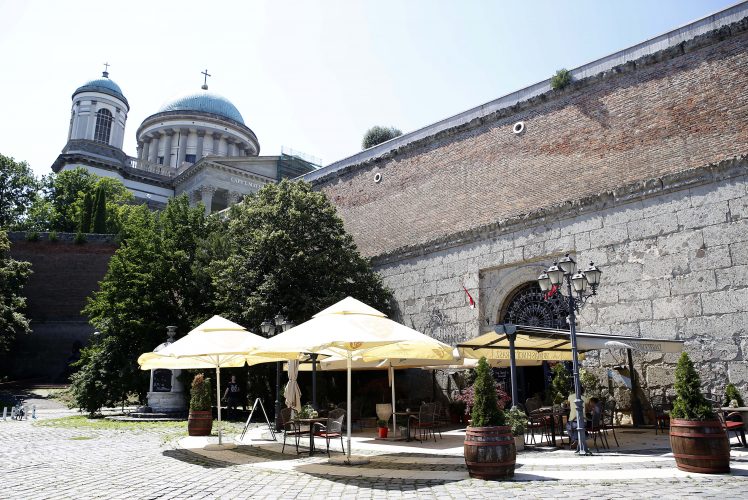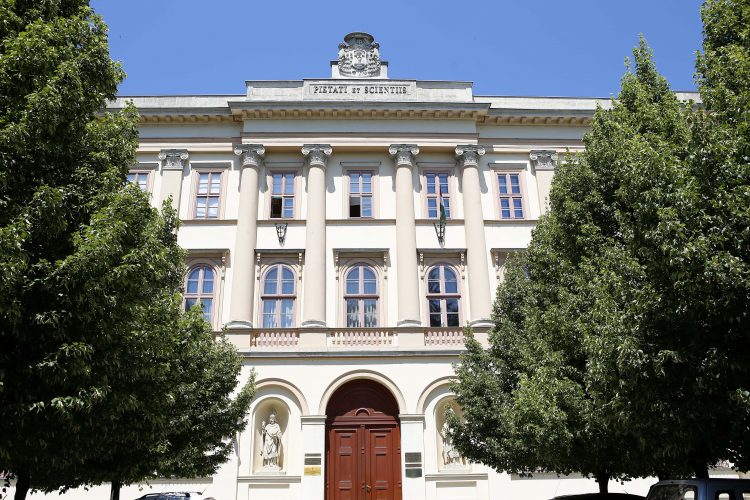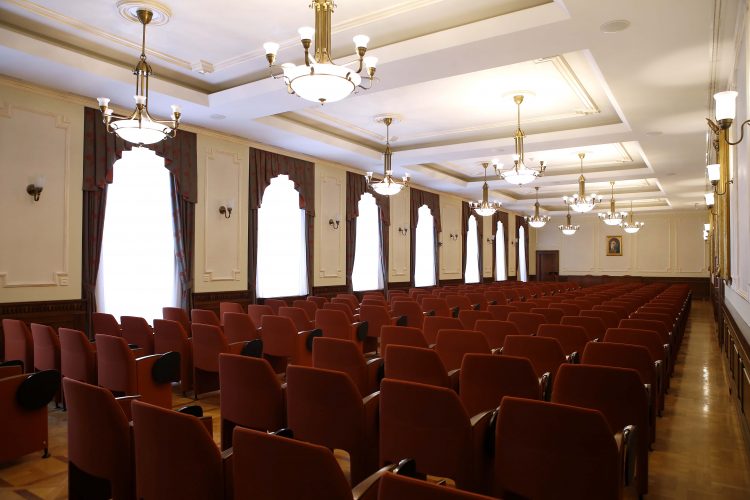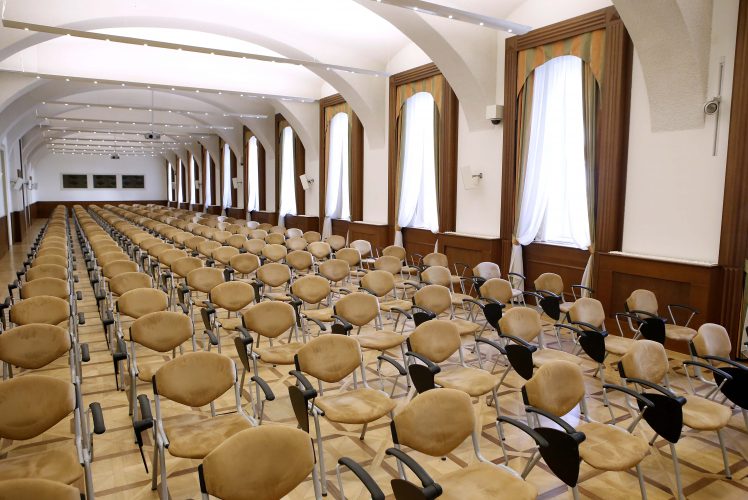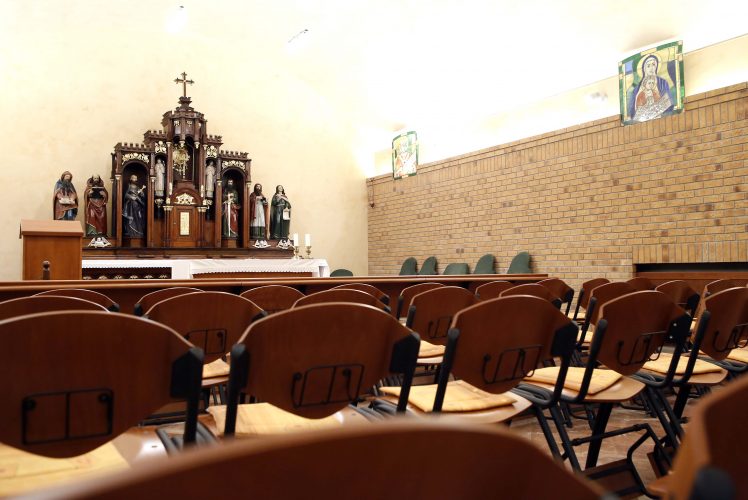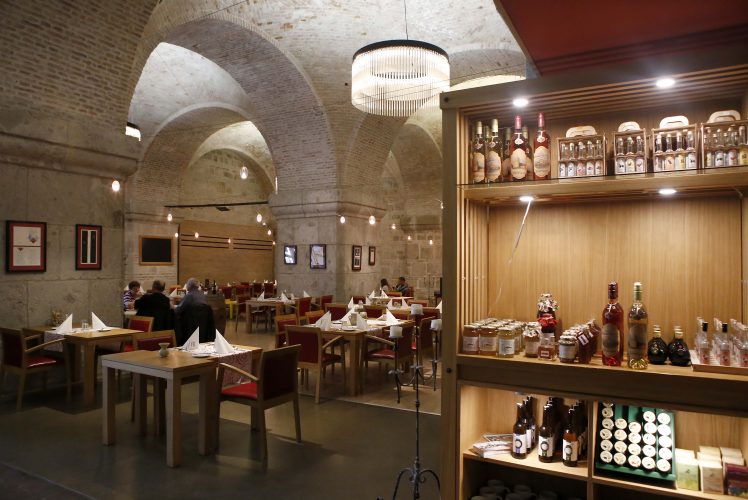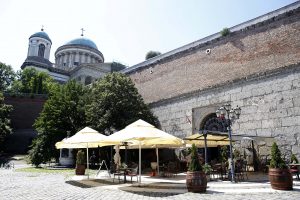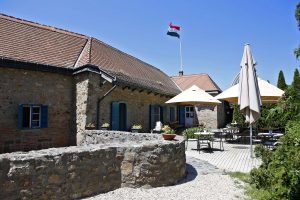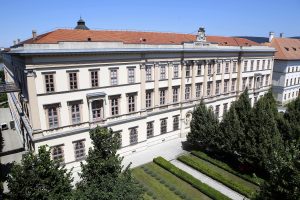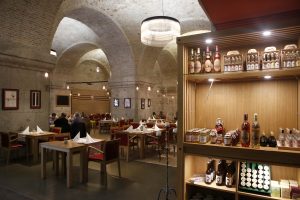
Body, soul, spirit

- Prior to having been appointed General Manager at the Esztergom-Budapest Archdiocese owned St. Adalbert Centre, you have already worked in several excellent hotels of Hungary. How would you define the professional challenge of your new role?
- Esztergom is a city full of great capabilities, it is the first capital of the Hungarians and the cradle of our Christian state. Maybe it was the size of the cultural and historical heritage, or the flush of choice, but unfortunately the past decades could not manage to overstep the stereotypes that were making the city as a couple of hours or a one day adventure trip tourist destination. I think that by changing my position to run a Church-affiliated and owned institution is a real and fantastic challenge. At a certain point I would like to reclassify the St. Adalbert Centre: apart from the sacral tourism, I find important to turn the Centre into a meeting point and leisure location for all generations. In the 21 st century it is not at all surprising that the Church itself intends to manage its properties that were formerly taken away from, while later on returned. On top, this is a sort of opportunity to present the Church’s open, hospitable, and “smiling” side as well.

- The Centre has been named after King St. Stephen’s tutor. Currently the Centre’s available services are mainly looked for by the travellers of the religious tourism. How can you raise the interest of a wider group as well?
- We plan to enlarge our clientele with our wide range of services, including a selection of various programs and gastronomic experience. The religious tourism is a dynamically developing field of the sector throughout Europe. Even the Mary’s pilgrimage that runs from Mariazell to Csíksomlyó crosses Esztergom, thus its development meets the needs. A certain circle of travellers is specifically interested in visiting places of outstanding values both from religious and cultural point of views. We encourage these pilgrims to spend more time in the city while discovering it at once. Many know the huge building located at the foot of the Basilica as a house of retreat only, while wedding ceremonies, literary evenings, concerts, conferences and other kind of events are also held here.
Hereby I would like to mention that the St. Adalbert Centre will also serve as a venue of the Theological Symposium related to the International Eucharistic Congress, when we are going to host Church dignitaries from all over the world.

Fabulous city
- As for Esztergom, first of all the Basilica may come to mind. Most of the tourists are highly attracted by it, however the city’s sights go far deeper than that. According to surveys, a number of the city sights are hardly seen by the visitors, while in many ways we can also call Esztergom as the city of the “tops”.
- Yes, as for sights we should also mention the Christian Museum, the Hungarian Environment and Water Museum representing the impact of water, the Basilica Treasury that is ranked first in Hungary and third across the world amongst the richest ecclesiastical treasury. Goes without saying that the Basilica, the country’s largest Catholic Church is the top attraction, peppered with the altar painting on the Assumption of Mary, the world’s largest painting on a single canvas, a fact known to few only. Almost every building and cobblestones are talking about the history of Hungary.
- What is the reason that people when hunting for programs out of Budapest are going to discover Szentendre and Visegrád at a maximum, while do not see Esztergom amongst their travel plan?
- One of the main issues is the accessibility, particularly when one is on a short trip planning. In this case travellers do not want to waste too much time on reaching a destination. The modernization of the railway line might bring a positive impact on our local tourism, such as turning the city into a water station of several Danube waterways. The Danube Bend provides numerous recreational opportunities for all ages. It would make sense to offer the complexity of a group of exciting experiences that would inspire the visitors to spend a longer period of time in the region, and to discover all the vast number of sights that this environ offers them. Another exciting program might be our improved gastronomic offer, as well as the 18 th century Primate Cellars beneath the Basilica. A further thrilling option can be the presentation of the Carpathian-Basin’s wine selection. Though our restaurants have already got great feedbacks as for their standards, I take it as my personal mission to further raise their quality.
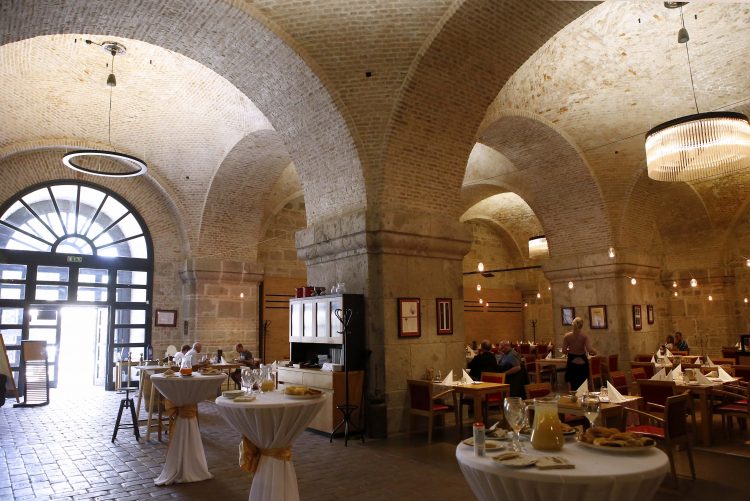
Towards complexity
- A sort of completeness. Does this mission derive from the ambition to pursuit the health? Are the visitors surprised by experiencing that their host at the St. Adalbert Centre takes care of their physical health in addition to their spiritual wellbeing?
- The self-service restaurant of the St. Adalbert Centre is open to everyone. Since its reopening we see more and more locals as our guests there. The pandemic lock down period was used to reorganise our menu in order to offer healthy and tastier meals. The Primate Cellar is taken as a top destination by the gastro funs. Esztergom is really able to perform the above mentioned complexity. Our cultural knowledge can be improved by visiting our museums and the castle. As for spiritual and mental care, the Basilica, the St. Thomas Becket Chapel or the Castle Theatre are all perfect options, while our body can be pampered with tasty foods and delicious wines. The mind, spirit and body triumvirate is cared for in our Centre, so we do our best to accomplish this completeness.

Priest’s cassocks and Soviet military boots
- Walking around the ancient walls of the Seminary’s monumental building, followed by a lunch there, is a unique experience. If the staircases, the corridors could talk…They might have witnessed old stories, human destinies, spiritual downs and ups, doubts and confidence…
- Awesome heritage we have: the building itself is 80 meters high, average clear height is 4,5 meters, total useful floor area amounts up to 12 thousand square meters. It was the largest public building of the Transdanubian region, the construction works took, with several interruptions, more than a decade. It served as a Seminary since 1865. Its monumentality and capability is well characterised by the iron bridge that leads directly from the Castle hill to the building’s second floor. It was also called “Bridge of Sighs”, reflecting to the Seminary’s strict rules and disciplines required from their students, who entered the institution after a deep sigh. Following the 2 nd World War the property had been nationalized, was used first as a military boarding-school, then as from 1955 to 1990 the former Seminary building served as the Soviet Army’s military hospital.
- You showed me an album with some photos. It is clearly visible what a great pile of rubble had been left behind by the occupying troops…
- The building has been returned to the Church in extremely poor condition in 1993 only. Seeing the crumbling balconies many were of the opinion that the property was unrecoverable. The renovation itself started a decade later, and was finished in 2006, right for the 150 th consecration anniversary of the Basilica. The renovation of the Seminary for priest candidates coming from the Partium, i.e. from the Highlands, Transcarpathia and the Southland, was carried out on behalf of the Archdiocese. Here, within these walls studied, and later on taught for a good two decades Ottokár Prohászka. Our intention is to organise guided tours to present the hidden treasures of this grandiose building and to familiarise the visitors with its history. The tour would include a visit to our extremely valuable and often sheltered library, the foundation of which dates back to 1566. Formerly it was owned by the Seminary, currently belongs to the Library of the Theological College of Esztergom.

- Does the Library have any book of special value?
- The Library Collection includes roughly six thousand pre-1800 printed works. It’s worth mentioning one of the most valuable manuscripts, namely the handwritten pages of the Káldi translated Bible, well hidden in the
binding board of a book and which was discovered by Cardinal Erdő Péter. During the centuries the Library had to be sheltered many times. From the former Great Seminary, i.e. from the Adalbert once only, still further sheltering occurred many more times during its history, otherwise a total destruction would have been in line. Currently the Library consists of 60.000 pieces and is open for public as well. The story of the reading hall and that of the former chapel is also worth a few words. When the building was occupied by the Soviet troops, these premises were immediately deprived of their original function, and were transformed into a gym and a
basketball court.
- Beyond its prominent religious tourist role what is needed to form the St. Adalbert Centre into one of the key touristic players in the Danube Bend?
- The St. Adalbert Centre has a guest house with single and double rooms. The dormitory serves to host larger groups and school trips. This spring our availability has been enriched by a brand new 3-star hotel of 50 rooms. The designers paid attention to best serve the needs of all ages. Young, elderly, families, dog owners, all can feel at home in the St. Adalbert Hotel. For disabled guests we do have rooms with special accessibility.
The hotel has an amazing view of the St. Thomas Chapel. The city’s main sights are within walking distance: the Basilica, the Christian Museum, the Main Square or the Primate Cellar. Part of the city centre is the Rondella Coffee House located on the Castle Hill, famous for its famous breath-taking view.
All in all, Esztergom is waiting to be discovered…

Photo: Marcsi Ambrus
Source: IEC
